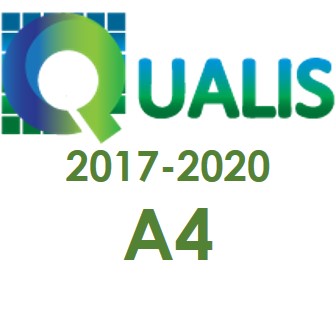Os Núcleos Aplicativos em Paumarí (Família Arawá). (The Applicative Heads in Paumari (Arawá Family))
DOI:
https://doi.org/10.22481/el.v4i1.1028Palavras-chave:
Núcleos funcionais, Aplicativos, Estrutura argumental, Línguas indígenas, PaumaríResumo
Este trabalho visa a oferecer uma breve descrição das estruturas aplicativas verificadas na língua Paumarí (família Arawá) e a classificar os morfemas envolvidos em tais construções, de acordo com a tipologia de morfemas aplicativos estabelecida por Pylkkänen (2000 e 2002).
PALAVRAS-CHAVE: Núcleos funcionais. Aplicativos. Estrutura argumental. Línguas indígenas. Paumarí.
ABSTRACT
In this work, we aim to offer a brief description of the applicative structures observed in the Paumarí language (Arawá family) and to classify the applicative morphemes involved in such constructions, according to Pylkkänen´s(2000, 2002) typology.
KEYWORDS: Functional heads. Applicatives. Argument structure. Indigenous languages. Paumari language.
Downloads
Referências
CHAPMAN, S. Gramática Pedagógica do Paumarí. Brasília: SIL, ms., 1981.
CHAPMAN, S; DERBYSHIRE, D.C. Paumarí. In: DERBYSHIRE, D.C ; PULLUM, G. K. (eds.). Handbook of Amazonian languages. Berlin: Mouton de Gruyter, p. 161-352, 1991.
HALE, K.; KEYSER, S. On the Argument Structure and the Lexical Representation of Syntactic Relations. In: KEYSER, S. J.; HALE, K. (ed.) View from Building 20. Cambridge: MIT Press, p. 53-190, 1993.
HARLEY, H.; NOYER, R. Distributed Morphology. Glot International, Berlin, v.4, n.4, p. 3-9, 1999.
HARLEY, H.; NOYER,R. Formal versus Encyclopedic Properties of Vocabulary: Evidence from Nominalizations. In: PETERS, B. (Ed.). The lexicon-Encyclopedia Interface. Oxford: Elsivier Science, p. 349-374, 2000.
LEMLE, M. Mudança sintática e sufixos latinos. Lingüística, Rio de Janeiro, v.1, n.1, p. 5-44, 2005.
LEVIN, B. The Basque verbal inventory and configurationality. In: MARÁCZ, L.; MUYSKEN, P. (eds.). Configurationality: the typology of asymmetries. Dordretch: Foris, p. 39-62, 1989.
MARANTZ, A. “Cat” as a phrasal idiom. MIT, ms., 1996.
MC GINNIS, M. Phases and the syntax of applicatives. NELS, Massachusetts, v. 31, p. 333-349 2001.
MC GINNIS; M. UTAH at merge: evidence from multiple applicatives. MITWPL, Cambridge, n.49, p.185-200, 2005.
PYLKKÄNEN, L. What applicative heads apply to. Working Papers in Linguistics, Pensilvania, v.64, [s.p.] 2000.
PYLKKANEN, L. Introducing Arguments. 2002. 72f Tese (PhD em Lingüística.) – Departamento de Lingüística e Filosofia do Massachusetts Institute of Technology, Cambridge, 2002.
Downloads
Publicado
Como Citar
Edição
Seção
Licença
Autores que publicam em Estudos da Língua(gem) concordam com os seguintes termos:
Estudos da Língua(gem) mantém os direitos autorais das contribuições publicadas e disponibiliza seu conteúdo gratuitamente por meio do portal. Autores têm permissão e são estimulados a publicar e distribuir seu trabalho online em repositórios institucionais ou na sua página pessoal, com reconhecimento de autoria e créditos de publicação inicial nesta revista, indicando endereço online.






